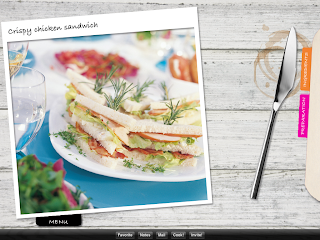Any self respecting urban resident considers his or her local café as a sort of holy grail. Regular café goers will also state, quite vehemently if pressed, that cafés are not just places to get the daily caffeine fix, but local institutions- places to meet, exchange ideas, catch up on their browsing of internet news sites, complete their university assignments and polish off a good book. And a piece of chocolate cake or two.

So I was rather alarmed when I spotted
this report in the New York Times yesterday, warning of the trend of the shrinking café. The aim is to revamp the modern café with little more than a bar and a few stools, not just in one or two establishments, but all across the board. All over Europe and the US. And what justification is given for this cold and merciless doing away with café culture? The need to utilize space as efficiently as possible. Cost cutting. In other words, it simply isn’t practical having us all lounging around, treating our local coffee outlets as substitute living rooms. Many owners, especially of smaller chains, lament the way in which almost every customer without exception now brings a laptop, plugging in and taking up vast amounts of space, the scene resembling “an office without the cubicles”, as one weary manager put it in the same article. My immediate reaction to this was one of self righteous outrage, a moral objection to what these people were saying. It is one’s right, is it not, to linger for hours over a cappuccino whilst reading a book? It’s minimalism gone mad. I mean, I admit: I’m spending about $5 to stay there for two and a half hours. Not a great return economically seen for the owners. But what were they thinking when they put in those wonderfully cushy sofas and low level lighting, not to mention the sublime jazz tinkling in the background? Did they honestly think I’d want to leave?
So now, stools are in, sofas are out. It’s all about maximizing the space. No more lounging. Order your coffee, pay, drink, leave.

Another argument invariably used to support these changes really grates on my nerves: “that’s how they do it in Italy: they go to espresso bars for a quick caffeine pit stop, and leave.” Well, last time I checked, we don’t all live in sunny Milan, where life is enjoyed at a more relaxed pace and coffee is an affordable necessity. Some of us live in rushed, grey and hectic London, where cafés are about the only places left in the whole city apart from churches, parks and libraries where it is possible to find a haven of peace and quiet. Soft tinkling jazz music in the background notwithstanding. And noisy, unchecked toddlers using the sofas as obstacle courses, and the metal trays and spoons as gongs. That brings me onto my next point. Why has nobody dared address this particular scourge? People using cafés as living rooms and portable offices? Unacceptable. Screaming children throwing fits (and sometimes food)? Not a problem. And coffee in London, Seattle and Copenhagen, for example, is quite frankly too expensive to be consumed at the speed with which the Italians drink it. We need to linger over a cup for hours, or we’d be out of pocket.
Some cities are somewhat insulated from these issues, lounging in cafés being such a long established tradition any mention of the kinds of changes outlined above would probably provoke national riots. Spain and France come immediately to mind. Coffee in these countries comes cheap and is a fixed part of the national daily routine. Lingering is part of the continental European mentality. The Dutch are also expert lingerers, but usually only on weekends. The point is, cafés are not like regular shops, so the same economics cannot really be as easily applied. Or maybe they can, but better in some cities than in others. In places where coffee culture has only fairly recently caught on- e.g. in London- people are prepared to pay for all sorts of crazy trends. If enough beautiful young celebrities are seen sipping espressos on London pavements, then this will probably become commercially viable in no time. Ditto in the US. But people need to relax. I am positively convinced that lingering is good for one’s mental and physical well being. And if cafés are no longer there in their original forms to provide this spiritual demand, then different establishments will flourish and compete to provide it instead. Fine by the consumer. Expensive coffee, sofas and jazz music may very well turn out to have been one of the decade’s oddest trends. But the need for relaxation and time away from the demands of modern city life is most certainly here to stay. Let’s just hope those disgruntled owners take heed and keep doing what they do best: good coffee, good music, good chocolate cake.
 We all enjoy a good carpaccio. But why not give these classic wafer thin appetizers a unique twist with fish, fruit or vegetables? Brimming with more variations on carpaccio than you could possibly imagine, this app will never leave you short of inspiration!
We all enjoy a good carpaccio. But why not give these classic wafer thin appetizers a unique twist with fish, fruit or vegetables? Brimming with more variations on carpaccio than you could possibly imagine, this app will never leave you short of inspiration! Ready to get started? Use the cooking mode which presents all the information you need, so that touching the iPad when cooking is minimalized.
Ready to get started? Use the cooking mode which presents all the information you need, so that touching the iPad when cooking is minimalized.











